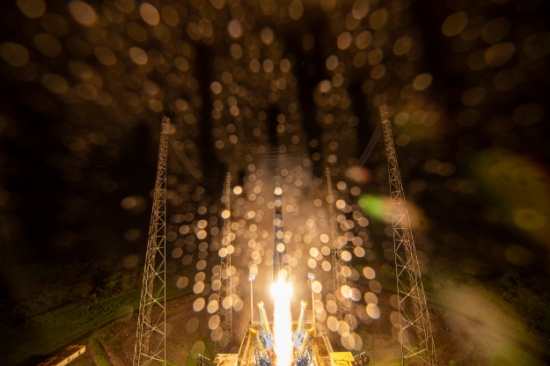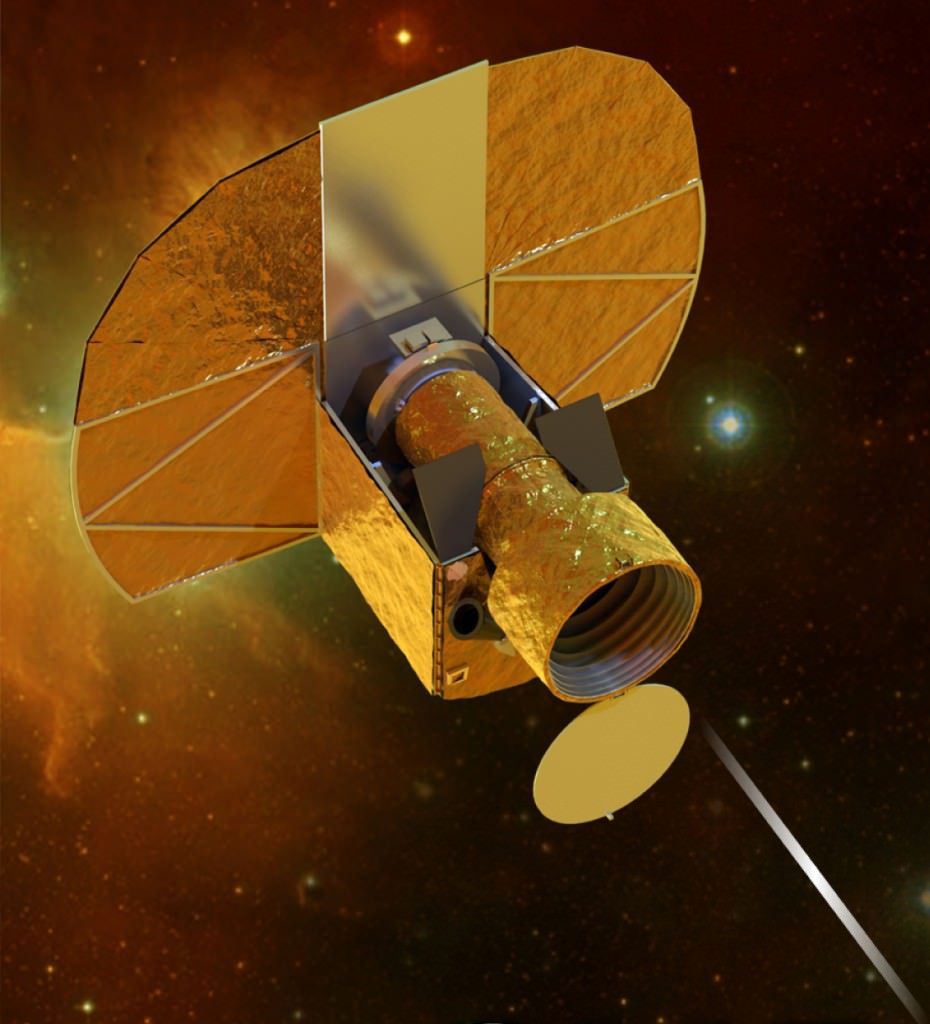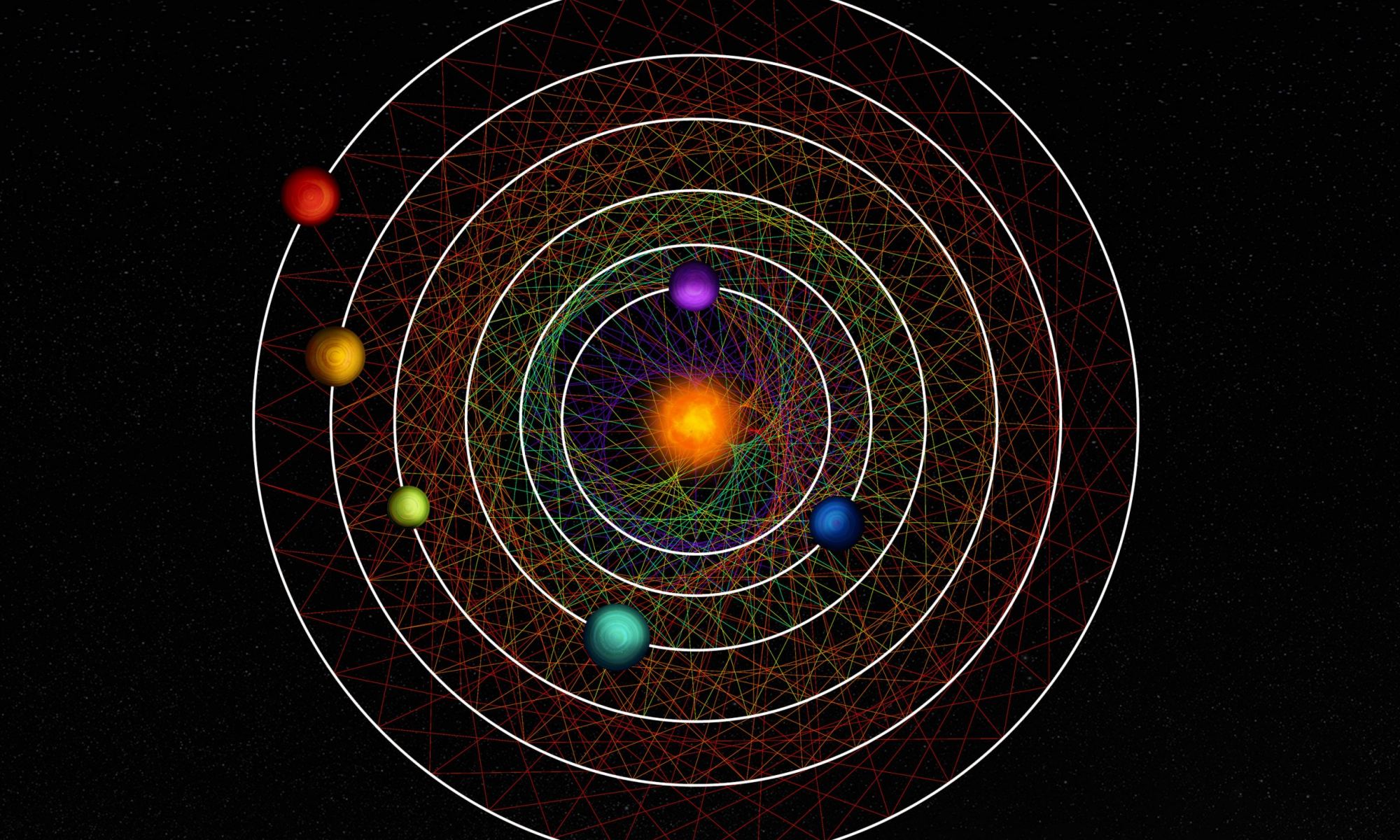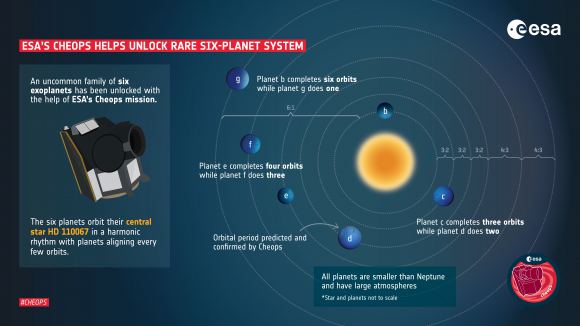

Johns Hopkins University (JHU) continues to pad its space community résumé with their interactive map, “The map of the observable Universe”, that takes viewers on a 13.7-billion-year-old tour of the cosmos from the present to the moments after the Big Bang. While JHU is responsible for creating the site, additional contributions were made by NASA, the European Space Agency, the National Science Foundation, and the Sloan Foundation.

Image: ESA’s Characterising Exoplanet Satellite, CHEOPS, lifts off from Europe’s Spaceport in Kourou, French Guiana. The Soyuz-Fregat launcher will also deliver the Italian space agency’s Cosmo-SkyMed Second Generation satellite, and three CubeSats – including ESA’s OPS-SAT – into space today. CHEOPS is ESA’s first mission dedicated to the study of extrasolar planets, or exoplanets. It will observe bright stars that are already known to host planets, measuring minuscule brightness changes due to the planet’s transit across the star’s disc. Credit: ESA – S. Corvaja.
ESA’s Characterising Exoplanet Satellite, Cheops, lifts off from Europe’s Spaceport in Kourou, French Guiana. The Soyuz-Fregat launcher will also deliver the Italian space agency’s Cosmo-SkyMed Second Generation satellite, and three CubeSats – including ESA’s OPS-SAT – into space today. Cheops is ESA’s first mission dedicated to the study of extrasolar planets, or exoplanets. It will observe bright stars that are already known to host planets, measuring minuscule brightness changes due to the planet’s transit across the star’s disc. ★ Subscribe: and click twice on the bell button to receive our notifications. Check out our full video catalog: Follow us on Twitter: On Facebook: On Instagram: On Flickr: We are Europe's gateway to space. Our mission is to shape the development of Europe's space capability and ensure that investment in space continues to deliver benefits to the citizens of Europe and the world. Check out http://www.esa.int/ESA to get up to speed on everything space related. Copyright information about our videos is available here: #ESA #Cheops #Liftoff

An artist’s illustration of the CHEOPS spacecraft. Image Credit: University of Bern.
The Characterising Exoplanet Satellite, Cheops, has successfully completed its final testing phase at Airbus Defence and Space Spain, Madrid. The satellite has also passed a very important review that determined it is ready to fly. Cheops will be stored in Madrid for a few months before being shipped to the launch site in Kourou, French Guiana; launch is scheduled in the time slot between 15 October and 14 November 2019. Cheops is our first mission to focus on exoplanets, or planets beyond our Solar System, orbiting stars other than the Sun. It will make observations of stars the are known to host exoplanets to measure small changes in their brightness due to the transit of the planet across the star's disc. Cheops will target in particular stars hosting planets in the Earth-to-Neptune size range. The information will enable precise measurements of the sizes of the orbiting planets to be made: combined with measurements of the planet masses, this will provide an estimate of their mean density – a first step to characterising planets outside our Solar System. Cheops paves the way for the next generation of our exoplanet satellites, with two further missions – Plato and Ariel – planned for the next decade to tackle different aspects of the evolving field of exoplanet science. The mission is a partnership between us and Switzerland with additional contributions from Austria, Belgium, France, Germany, Hungary, Italy, Portugal, Spain, Sweden, and the United Kingdom. This film contains contributions from Nicola Rando, Cheops Project Manager, ESA; and Kate Isaak, Cheops Project Scientist, ESA. Learn more: ★ Subscribe: and click twice on the bell button to receive our notifications. Check out our full video catalog: ★ Subscribe: and click twice on the bell button to receive our notifications. Check out our full video catalog: Follow us on Twitter: On Facebook: On Instagram: On Flickr: ESA is Europe's gateway to space. Our mission is to shape the development of Europe's space capability and ensure that investment in space continues to deliver benefits to the citizens of Europe and the world. Check out http://www.esa.int/ESA to get up to speed on everything space related. Copyright information about our videos is available here: http://www.esa.int/ESA_Multimedia/Terms_and_Conditions #ESA #SpaceScience #CHEOPS

A team of researchers led by University of Chicago astronomer Rafael Luque analyzed data acquired by both NASA’s Transiting Exoplanet Survey Satellite (TESS) and ESA’s CHaracterising ExOPlanet Satellite (Cheops) and found a unique planetary system. Orbiting a star cataloged as HD110067, this system contains six sub-Neptune planets. Incredibly, all six planets are orbiting in direct resonance with each other. The results of the work were published on November 29 in Nature.

Working through the calculations to find potential resonances, the team matched one set of transits to a planet orbiting in 31 days. Again, the orbit was a 3/2 resonance, with planet d orbiting three times to planet e’s two times. However, there were possibly two more unmatched transits in the data. TESS had only observed each one a single time, making confirmation difficult. One planet orbited in 41 days; the other in 55. Credit:ESA
The animation shows the orbits of the six planets discovered transiting the bright K-dwarf star HD110067. The six planets were found from a combination of NASA/TESS and ESA/CHEOPS observations. They have sizes between Earth and Neptune, although they are very likely a mix of hydrogen gas, water and rock. All six planets orbit in a so-called resonant chain - this synchronised dance means the ratio of planet orbits form perfect fractions - in this case 3/2 and 4/3. Resonances lend themselves perfectly to music, and the notes played as each planet passes across (or transits) its star are each tied to the orbital frequency of the orbit. In reality the six planets play a G7sus4 chord with a base note of F-24 (1.27microHz). The background image is from raw data from NASA's Transiting Exoplanet Survey Satellite (TESS; processed by Ethan Kruse). Animations, annotations and sound composition all made by Dr Hugh Osborn. For clarity the planets have been scaled up relative to their star, and the orbits have been precisely set to the nearest resonant orbit (while in reality they are ~0.1% away). Annotations describe the global effort to solve this mysterious system, including observations from NASA TESS, ESA CHEOPS, radial velocities from HARPS-N & Carmenes, and ground-based photometry from NGTS, Saint-Ex, Tierras, LCO and MuSCAT telescopes. The paper, "A resonant sextuplet of sub-Neptunes around the bright star HD 110067" by Luque, Osborn, Leleu, Pallé et al is released on 30/11/2023 The results of the work were published on November 29 in Nature. Transcript
More cool designs are on Amazon: Get a Wonderful Person shirt: Alternatively, PayPal donations can be sent here: Hello and welcome! My name is Anton and in this video, we will talk about a star system where all 6 planets are in perfect resonance Links: A resonant sextuplet of sub-Neptunes transiting the bright star HD 110067 Discovery Alert: Watch the Synchronized Dance of a 6-Planet System Solar system is unique: Turns Out, Solar System Is The Rarest Planetary System Out There #HD110067 #resonance #astronomy 0:00 New star system with perfect resonance 1:00 What this sounds like as music 1:30 What these planets are like 2:00 Understanding this resonance 2:35 How this probably formed 3:20 How solar system compares to this 3:45 Other exciting reasons for this star system 5:30 Some resonance in the solar system 6:20 Other chain resonance planetary systems 6:50 Unusual similarity with other systems...why though? 7:55 Potential guesses of how this forms 9:00 Why this is important Support this channel on Patreon to help me make this a full time job: Space Engine is available for free here: Enjoy and please subscribe. Or get a shirt: Twitter: Facebook: Twitch: Bitcoins to spare? Donate them here to help this channel grow! 1GFiTKxWyEjAjZv4vsNtWTUmL53HgXBuvu The hardware used to record these videos: CPU: Video Card: Motherboard: RAM: PSU: Case: Microphone: Mixer: Recording and Editing: Some of the above are affiliate links, meaning I would get a (very small) percentage of the price paid. Images/Videos: https://en.wikipedia.org/wiki/Orbital_resonance#/media/File:Resonant_planetary_system.gif">Amitchell125 CC BY-SA 4.0 Dr. Hugh Osborn, University of Bern Animation of the orbits of the six planets around HD110067 To-scale animation of the orbits of the six resonant planets in the HD110067 system Tony Dunn Depiction of Haumea's presumed 7:12 resonance with Neptune in a rotating frame, with Neptune (blue dot at lower right) held stationary.
Haumea's shifting orbital alignment relative to Neptune periodically reverses (librates), preserving the resonance. Pablo Carlos Budassi CC BY-SA 4.0 Artist's conception of a mini-Neptune or "gas dwarf" Licenses used: Licenses by 4.0 Licenses by-sa 4.0 Licenses by 3.0 Licenses by-sa 3.0 Licenses by 2.5 Licenses by-sa 2.5 Licenses by 2.0 Licenses by-sa 2.0